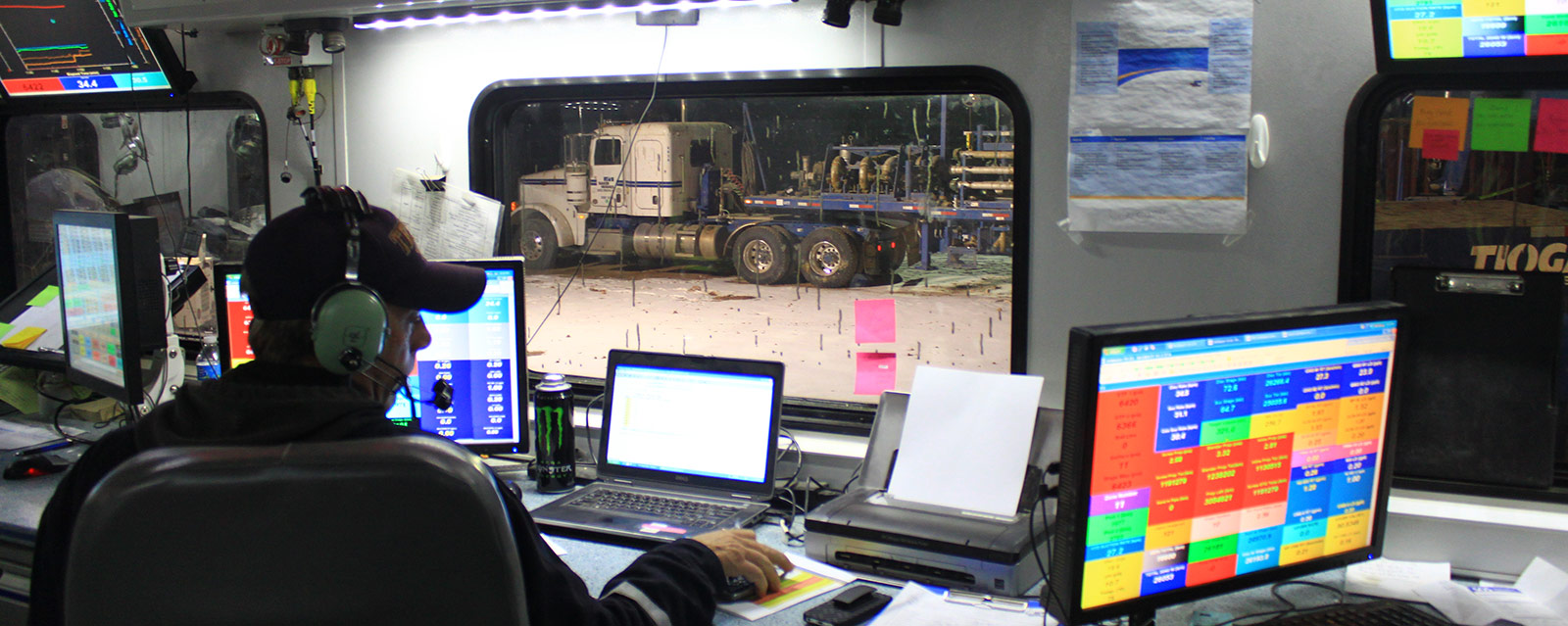Hydraulic Fracturing
“Hydraulic fracturing is essential for developing our abundant and environmentally desirable natural gas resources, and the safety and effectiveness of this process are proven every day.” Tom Richmond, former MBOGC Administrator
Hydraulic fracturing is a 60+ year old stimulation technique used to extract oil and natural gas from tight formations. After a well is drilled, a pressurized mix of water, sand, and chemical additives is used to free up oil and natural gas that would otherwise remain trapped in rock formations.
Engineers use computer models to custom-design each individual fracture treatment, taking into account the physical and chemical properties of the rock, the fluids contained within that rock, and the mechanical condition of the well.
Approximately 1.2 million wells have been hydraulically fractured in the U.S. since the technique was first developed, with no documented harm to groundwater.
 Frac fluid is comprised of 99.95% water and sand. The remaining .5 % includes such additives as Sodium/Potassium Carbonate, used in detergent; Borate Salts, used in cosmetics; Isopropanol, used in detergent; Ethylene Glycol, used in home cleaners; Guar Gum, used in ice cream; Sodium Chloride, table salt.
Frac fluid is comprised of 99.95% water and sand. The remaining .5 % includes such additives as Sodium/Potassium Carbonate, used in detergent; Borate Salts, used in cosmetics; Isopropanol, used in detergent; Ethylene Glycol, used in home cleaners; Guar Gum, used in ice cream; Sodium Chloride, table salt.
Companies may file trade secrets for additives which confer a competitive advantage. Typically, in frac fluid, these tend to be the most environmentally beneficial additives. Trade secrets are protected in state and federal statute from misappropriation.
In addition to rules on disclosure, Montana requires operators to test well bores and casing ahead of fracture stimulation to ensure their mechanical integrity.
Oil and gas deposits in shale formations are separated from groundwater acquirers by thousands of feet of impermeable bedrock. Studies show that residual frac water which is not returned to surface as flowback remains trapped in shale formations and does not pose a risk to groundwater.
All frac flowback collected at the surface is trucked off of location and disposed of in an injection well, or treated for future fracture stimulation.
Coupled with hydraulic fracturing, directional drilling lessens surface disturbance dramatically by allowing operators to condense multiple wells within the same defined drilling area, rather than drilling wells across a much larger surface area.
| MYTH | FACT |
| MYTH: Hydraulic fracturing depletes water supplies. | FACT: The amount of water used for hydraulic fracturing is comparatively small; about 0.8 percent of total demand in any given area, and less than 2% of total water usage in Montana, according to the U.S. Geological Survey. |
| MYTH: Fracturing contaminates groundwater. | FACT: “We found the hydraulic fracturing activities in the United States are carried out in a way that has not led to widespread systemic impacts on drinking water resources.” Tom Burke, EPA |
| MYTH: Air emissions due to hydraulic fracturing are harmful to public health. | FACT: Air monitoring data from state and federal regulatory agencies do not support this. Data from the U.S. EPA and the U.S. Energy Information Administration (EIA) show a 60 percent decrease in particulate matter from 2005 to 2013. Sulfur dioxide (SO2) also declined by 68 percent between 2005 and 2013, when oil and gas production was booming. |
